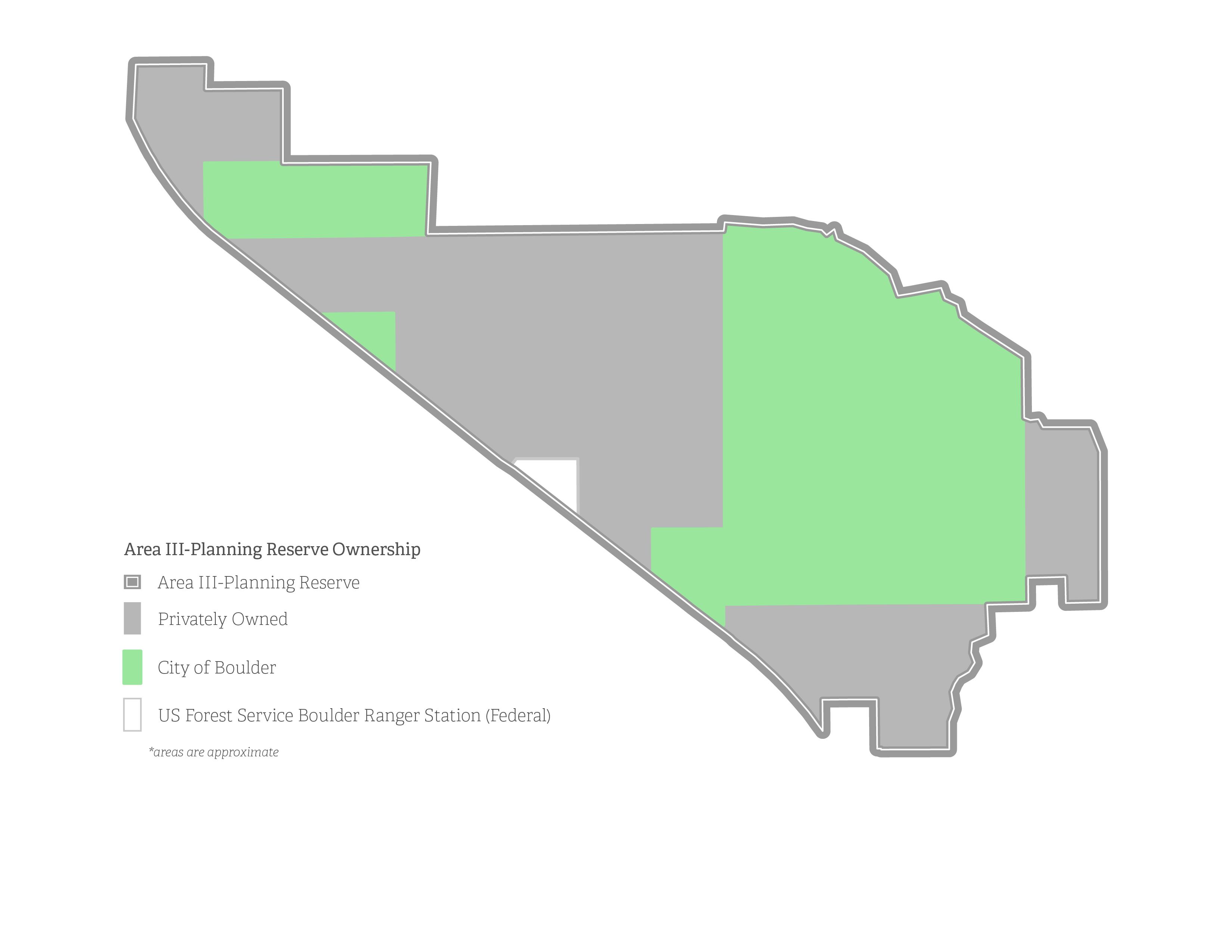Project Overview
The Service Area concept which establishes Areas I, II, and III, and describes where urban development can occur is a foundational element of the Boulder Valley Comprehensive Plan. Together with the plan’s joint city–county decision-making structure, it sets Boulder apart from many other communities in Colorado and across the country.
Area I includes land already within the city of Boulder where urban development is focused.
Area II includes land under Boulder County’s jurisdiction today, but is eligible for future annexation to the city.
Together, Areas I and II make up Boulder’s Service Area.
Area III was established in 1977 to protect Boulder’s rural character by prohibiting urban development.
Within Area III, the Area III-Planning Reserve (Planning Reserve) is an approximately 500-acre area located on the north side of Boulder. Identified in the 1993 Area III Planning Project, the Planning Reserve is the only portion of Area III where the city maintains the option of future Service Area expansion. This expansion will only be considered if there are priority community needs that cannot be met within the existing Service Area (Areas I and II).
The Boulder Valley Comprehensive Plan outlines a multi-step process for any potential Service Area expansion, specifically for changing land in the Planning Reserve from Area III to Area II, which is a prerequisite for annexation. This process ensures that any expansion is careful, deliberate, and aligned with community priorities.

